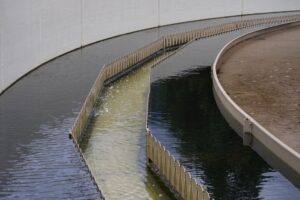03/18/2024 | Swimming Pool & Spa | 18 MINUTE READ
Preparing for the 2024 Pool Season: A Comprehensive Guide to Cleaning, pH, and ORP
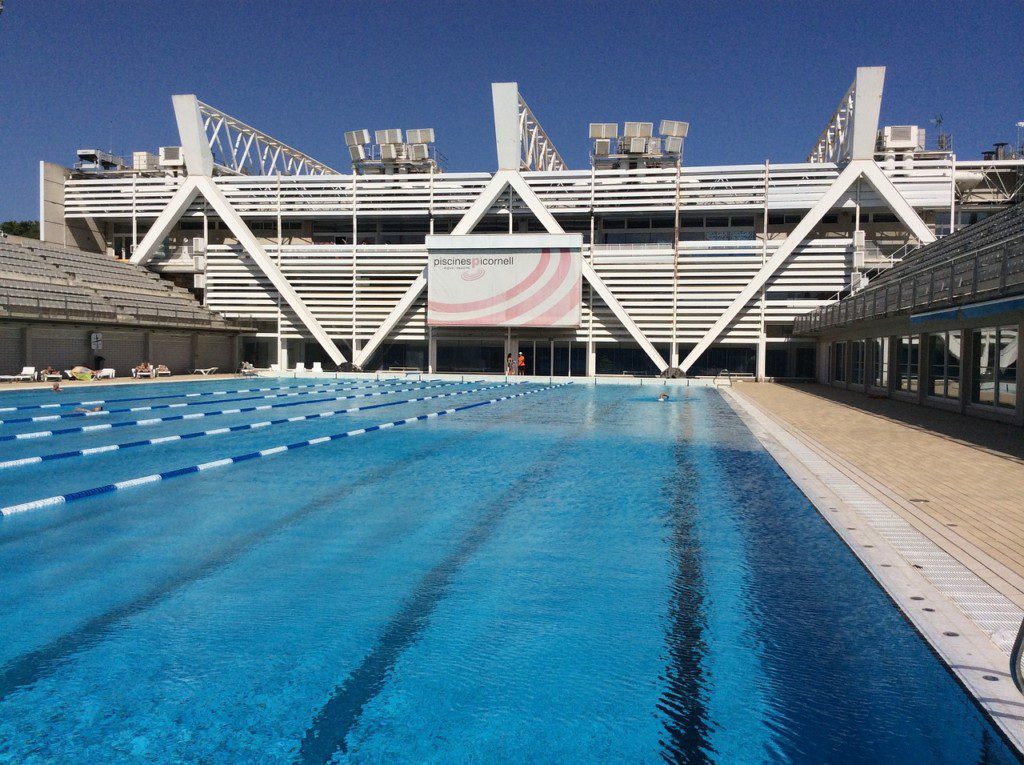
As the temperatures rise and the promise of lazy summer afternoons beckons, pool owners eagerly anticipate the joy of refreshing swims and relaxing poolside moments. However, the key to a successful and enjoyable pool season lies in the meticulous preparation of your swimming pool. This comprehensive guide delves into the crucial steps and considerations for ensuring your pool is open and optimized for a season of aquatic bliss.
A proper opening is crucial for the health of swimmers and the pool itself, and embracing the appropriate techniques can make all the difference. We’ll explore the insights seasoned pool professionals and maintenance experts provide to equip you with the knowledge needed to kick off the 2024 pool season on the right note.
Moreover, in the era of advanced pool management, we’ll highlight the integral role of pH (potential of Hydrogen) and ORP (Oxidation-Reduction Potential) sensors. These sophisticated devices play a pivotal role in monitoring water quality, maintaining chemical balance, and ensuring the optimal operation of your pool. As we embark on this journey to master pool chemistry, let’s unlock the secrets of a pristine, inviting pool environment that promises endless summer delights.

The Importance of Proper Pool Opening
Opening your pool for the summer season is more than just a ceremonial act—it’s a critical step that sets the tone for months of aquatic enjoyment. Neglecting the necessary precautions and procedures during pool startup can lead to many issues, both for the well-being of swimmers and the pool’s longevity.
Structural Integrity
One of the foremost concerns industry experts emphasize is the pool’s structural integrity. Draining the pool without adequate consideration can pose serious risks, especially in regions with high water tables. The absence of water can result in the pool lifting out of the ground like a boat floating on water, leading to extensive damage and potentially requiring a complete pool replacement.
Chemical Balance
A thorough pool opening requires a systematic approach to maintain chemical balance. Implementing a “chemical open” is advised, involving assembling the filtration system, cleaning baskets, and removing any winterizing plugs. Attentiveness to the chemical composition of the water is crucial to guarantee its safety for swimmers and promote the pool’s overall health.
Water Level Management
Maintaining the appropriate water level is another crucial aspect of pool startup. Topping off the water is essential, significantly if the level has dropped during winter. A balanced water level not only aids in chemical distribution but also prevents potential issues from inadequate water coverage.
Professional Water Testing
Seeking professional water testing services adds more precision to the pool opening process. By taking a water sample to a reputable pool store, you can obtain a comprehensive analysis of mineral content, total alkalinity, pH, and chlorine levels. With this information, pool owners can make informed decisions about necessary adjustments.
It is the foundation upon which a season of clear, inviting waters rests. As we move forward into the 2024 pool season, understanding and implementing these opening procedures will ensure a safe, enjoyable, and long-lasting pool experience.
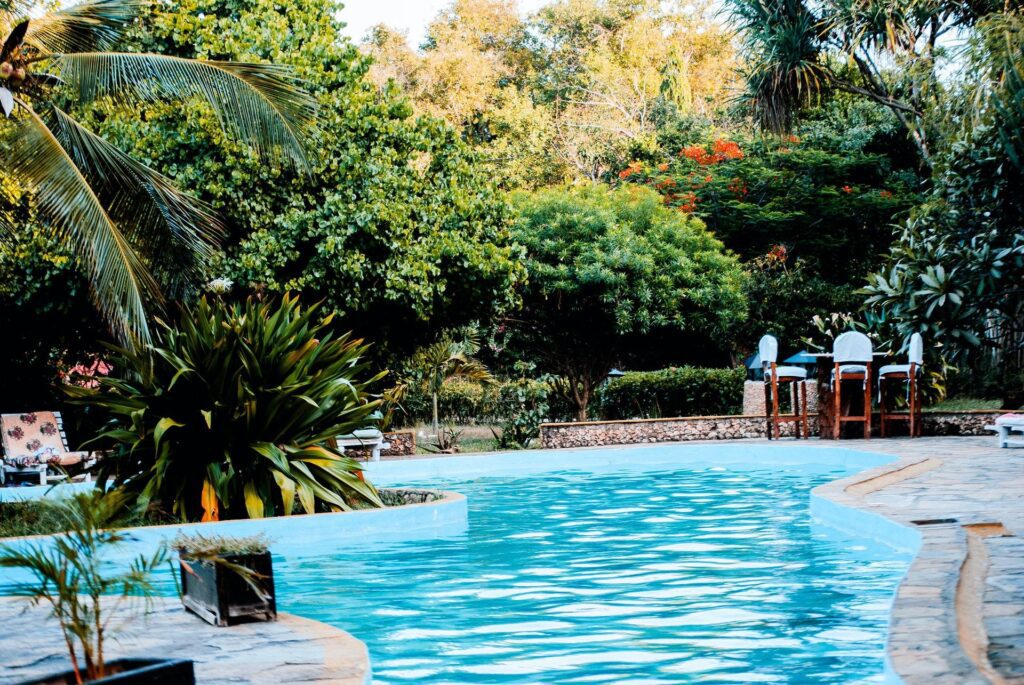
General Steps for Pool Preparation
Preparing your pool for the upcoming season involves a systematic approach to address various aspects, from debris cleanup to chemical balance. Following these general steps will help ensure a smooth and effective pool opening:
- Debris Cleanup and Inspection:
- Trim overgrown trees and hedges around the pool area.
- Sweep away leaves and debris from the pool surroundings.
- Inspect the pool deck, furniture, safety rails, slides, rescue equipment, ladders, and diving boards for damage and wear.
- Inventory and Ready Pool Chemicals:
- Equip yourself with the necessary pool chemicals for a seamless startup.
- Essential chemicals include a reliable test kit or test strips, chlorine for sanitizing, shock treatment, water balance adjusters, and algaecide treatment.
- Remove Pool Cover:
- A pool cover pump eliminates accumulated water and debris.
- Clean the pool cover using a suitable cleaner, then store it in a dry location.
- Inspect and Prepare Pool Equipment:
- Check and restore directional fittings, remove drain or winterizing plugs from skimmers, and wall returns.
- Inspect the filter and pump for damaged or worn parts; replace as needed.
- Reattach underwater pool lights during the winter.
- Address Pool Surface Issues:
- Inspect the pool finish and decking for damages or signs of wear and tear.
- Remove calcium buildup and stains from tiles using appropriate pool scale removal products.
- Fill the Pool and Final Debris Removal:
- Use a garden hose to fill the pool to the midpoint of the waterline tile.
- Clean leaves, twigs, and debris from the pool’s bottom using a pool brush.
- Turn on the Pool Filter and Water Testing:
- Activate the pool filter and let it run for 12 to 24 hours to circulate the water.
- Test the water using a reliable kit or strips, adjusting chemical levels as necessary.
- Consider professional water testing for a comprehensive analysis.
- Regular Maintenance Throughout the Season:
- Test pool water weekly and seek professional analysis monthly.
- Follow best maintenance practices, including daily sanitation, routine shock treatments, and preventive doses of algaecide.
By adhering to these general steps, pool owners can establish a solid foundation for a clean, well-maintained pool ready to offer a refreshing escape during the upcoming 2024 season.
Chemical Checklist for Pool Startup
Proper pool preparation involves meticulous attention to chemical balance, ensuring a safe and enjoyable swimming experience throughout the season. Here’s a comprehensive chemical checklist for your pool startup:
- Chlorine: Chlorine, essential for disinfecting pool water and preventing the growth of harmful bacteria, is available in various forms, such as liquid, granular, or tablet chlorine.
- pH Increaser and Decreaser: pH Increasers and Decreasers play crucial roles in maintaining the pH between 7.2 and 7.4 for optimal chlorine effectiveness. Use soda ash to increase pH and muriatic acid or sodium bisulfate to decrease it.
- Algaecide: Algaecide is a preventive measure against algae growth in the pool, and selecting a suitable product helps keep the water clear and free from unwanted green hues.
- Calcium Chloride: Calcium Chloride becomes especially crucial in areas with soft water to adjust calcium hardness levels. It inhibits calcium absorption from the environment, preventing damage to pool surfaces.
- Cyanuric Acid (Stabilizer): Cyanuric Acid (Stabilizer) is essential for protecting chlorine from degradation caused by UV rays. Consider using cyanuric acid-based tablets to ensure a consistent chlorine presence.
- Sodium Bicarbonate: Sodium Bicarbonate stabilizes total alkalinity in the pool, preventing pH fluctuations. Use it to increase alkalinity levels and maintain a balanced pool environment.
- Pool Shock: Pool Shock, a high-dose chlorine treatment, is crucial for eliminating bacteria and algae. Follow the product’s instructions carefully and wait for the recommended time before swimming.
- Test Kits or Strips: Test Kits or Strips are essential for regularly monitoring pool water parameters like pH, chlorine levels, alkalinity, and calcium hardness. Choose between test kits and strips for convenient and accurate testing.
- Pool Clarifier (Optional): Pool Clarifier (Optional) enhances water clarity by grouping tiny particles for easier filtration, which helps maintain a sparkling and inviting pool appearance.
Ensuring your pool has the right chemicals is fundamental to a successful startup. Regular testing and adjustment of these chemicals will contribute to a well-balanced pool environment, promoting water safety and longevity.
Best Time to Open a Pool
Timing is crucial when preparing your pool for the upcoming season. Opening your pool at the right moment ensures a smoother startup and sets the stage for a delightful swimming experience. Consider the following factors to determine the best time to open your pool:
Temperature Consistency is crucial, and aiming to open your pool when the daily temperatures consistently reach 70 degrees Fahrenheit or higher is ideal. Warmer temperatures promote efficient chemical reactions and microbial control during startup.
Waiting until late spring or early summer to open your pool can prevent pollen accumulation, reducing the risk of algae buildup and filter clogs.
Monitoring Weather Patterns is essential to avoid unexpected cold snaps or extreme fluctuations. Sudden drops in temperature after pool startup may hinder the effectiveness of chemical treatments.
Another consideration is pollen avoidance. Open your pool when trees finish releasing pollen. This practice minimizes the risk of excessive debris entering the water, helps maintain water clarity, and reduces the need for frequent cleaning during the startup process.
UV Protection is crucial, as UV rays can degrade chlorine levels in the pool, affecting water sanitation. Opening the pool when the sun’s intensity is manageable improves chemical stability.
By aligning your pool opening with these considerations, you create an optimal environment for the startup procedures. This strategic approach enhances the effectiveness of chemical treatments and contributes to a hassle-free and enjoyable pool season.
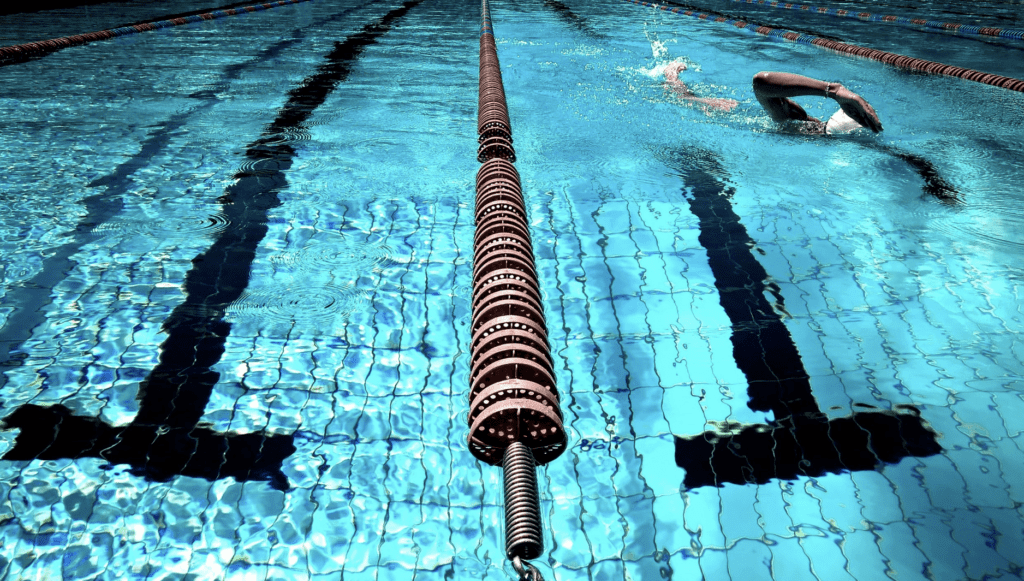
8 Steps to Get Your Pool Ready
Opening your pool for the upcoming season requires a systematic approach to ensure proper functionality, water clarity, and a safe swimming environment. Follow these eight essential steps to get your pool ready for a summer of enjoyment:
- Avoid Draining Your Pool: Do not drain your pool entirely unless necessary for structural work or excessive debris. Draining in high water table conditions may cause the pool to lift out of the ground, causing significant damage.
- Initiate a Chemical Open: Start by assembling the filtration system, cleaning all baskets, and removing any plugs installed during the pool’s closure. Perform a chemical opening to kickstart the water treatment while keeping the pool cover on.
- Top Off the Water Level: If the water level has decreased during the winter, fill it to the desired level before activating the filtration system. Ensure the filter is clean before turning it on to optimize its efficiency.
- Professional Water Testing: Take a water sample to a professional pool store for comprehensive testing, covering mineral content, total alkalinity, pH, and chlorine levels. Receive expert recommendations on necessary adjustments for a well-balanced pool.
- Chemical Balancing: Based on professional guidance, the pool’s pH levels are adjusted using soda ash or muriatic acid. Total alkalinity is maintained within the recommended range using sodium bicarbonate or muriatic acid. Calcium chloride is appropriate for addressing calcium hardness. Cyanuric-based tablets stabilize chlorine levels within the ideal range for prolonged effectiveness.
- Wait for Water Clarity: Resist the urge to uncover the pool prematurely. Allow the filtration system to run daily until the water is clear. Expect this process to take approximately a week, adding chlorine as needed to maintain proper levels.
- Thorough Cleaning After Uncovering: Remove the pool cover once the water is clear to avoid additional debris accumulation. Vacuum the pool floor, removing leaves and debris that may have settled during the startup process.
- Ongoing Maintenance: Throughout the swimming season, prioritize regular maintenance tasks, including cleaning the filter, weekly vacuuming, and daily chemical level testing. Schedule monthly professional water testing to address any evolving issues and ensure water quality.
These meticulous steps will set the foundation for a well-prepared and enjoyable pool season. Proper pool opening procedures contribute to water clarity, chemical effectiveness, and swimmers’ overall safety.
Special Considerations for pH and ORP Sensors
In the pursuit of optimal pool water quality, the integration of advanced monitoring systems becomes increasingly vital. pH (potential of Hydrogen) and ORP (Oxidation-Reduction Potential) sensors are crucial in maintaining a balanced and safe swimming environment. Here are essential considerations when incorporating pH and ORP sensors during pool startup and maintenance.
Utilize a high-quality pH sensor to measure your pool water’s acidity or alkalinity accurately. Ensure proper calibration of the pH sensor to guarantee precise readings and reliable data for water treatment decisions.
Understand the importance of ORP in indicating the effectiveness of disinfection on pool water. ORP sensors measure the pool water’s ability to oxidize contaminants, providing insights into the overall sanitation level.
Regularly calibrate both pH and ORP sensors to maintain reading accuracy. Follow manufacturer guidelines for calibration frequency and procedures to ensure optimal sensor performance.
Strategically place pH and ORP sensors in areas with good water circulation for representative readings. Follow installation guidelines to prevent interference from sunlight, chemicals, or debris, which can affect sensor accuracy.
Implement a real-time monitoring system for pH and ORP levels, allowing proactive adjustments to maintain water balance. Integrate alarm features that notify pool operators of deviations from the optimal pH and ORP ranges, enabling swift corrective actions.
Establish routine maintenance protocols for pH and ORP sensors, including cleaning and inspection. Regularly check sensor condition and replace damaged components to ensure continuous and reliable operation.
Keep a comprehensive record of pH and ORP readings over time. Analyze historical data to identify trends, enabling proactive measures to prevent water quality issues before they arise.
Consider integrating pH and ORP sensors with pool automation systems for seamless control and monitoring. Automation allows for automatic adjustments to chemical dosing systems based on real-time sensor readings.
Seek professional assistance installing, calibrating, and maintaining pH and ORP sensors. Pool technicians with expertise in sensor technology can ensure optimal performance and troubleshoot any issues effectively.
By prioritizing the proper integration and maintenance of pH and ORP sensors, pool owners can enhance their ability to manage water quality efficiently. These sensors contribute to a proactive approach to maintaining the pool’s chemical balance, ensuring a safe and enjoyable swimming experience.
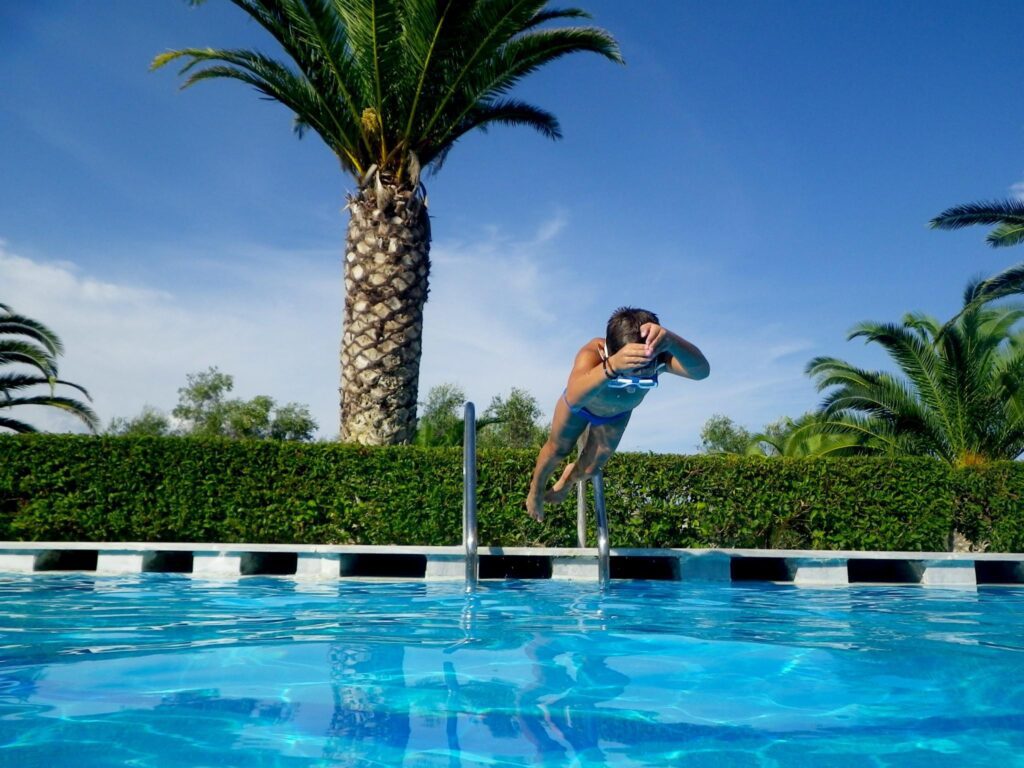
Using pH and ORP Sensors for Water Testing
Accurate water testing is the cornerstone of pool maintenance, ensuring a safe and enjoyable swimming environment. The pH and ORP sensors offer valuable insights into pool water’s chemical composition and disinfection efficacy. Here’s how to effectively leverage pH and ORP sensors for comprehensive water testing during the pool startup and maintenance phases.
pH sensors measure the hydrogen ion concentration in the water, indicating whether the pool water is acidic, neutral, or alkaline. Maintain the pH level within the recommended range of 7.2 to 7.4 for ideal chlorine effectiveness and bather comfort.
ORP sensors gauge the oxidation-reduction potential, reflecting the pool water’s ability to disinfect and eliminate contaminants. Aim for an ORP range between 650 to 750 mV to ensure efficient sanitation and bacteria control.
Using pH and ORP sensors in tandem provides a comprehensive view of water quality, simultaneously addressing both acidity levels and disinfection efficacy. Real-time monitoring allows swift corrective actions responding to deviations from optimal pH and ORP ranges.
pH and ORP sensors generate data logs, offering a historical perspective on water quality trends. Analyze data trends to identify recurring issues or patterns, enabling proactive adjustments in water treatment strategies.
Integrate pH and ORP sensors with pool automation systems for seamless chemical dosing control. Automation systems can adjust pH and sanitizer levels based on real-time sensor readings, reducing manual intervention.
Regularly calibrate pH and ORP sensors to maintain accuracy in readings. Adhere to manufacturer guidelines for calibration frequency and procedures to ensure reliable and precise water testing.
Implement alarm features tied to pH and ORP sensor readings to receive instant notifications of any deviations. Prompt alerts enable pool operators to take preventive actions before water quality issues escalate.
Seek pool professionals’ expertise to install and calibrate pH and ORP sensors. Pool technicians can offer valuable insights into sensor diagnostics, troubleshooting, and ensuring optimal performance.
By incorporating pH and ORP sensors into your water testing regimen, you empower yourself with the tools to maintain precise control over pool water quality. These sensors simplify the testing process and improve your pool maintenance routine’s efficiency and effectiveness.
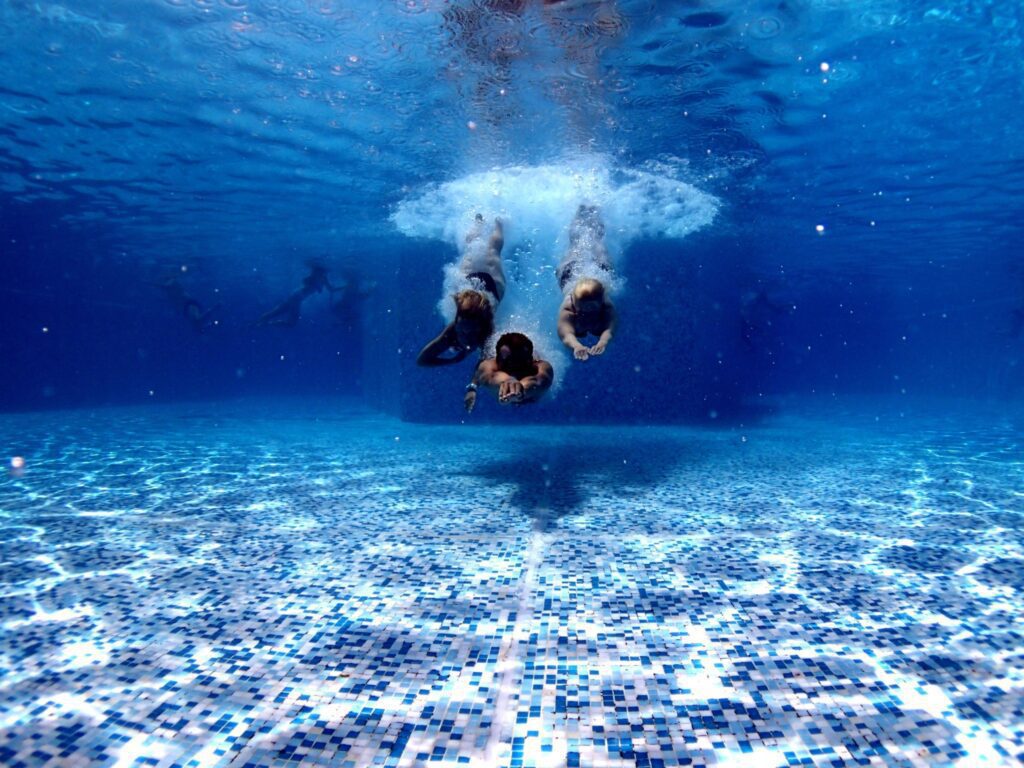
Balancing Chemicals Using pH and ORP Data
Maintaining a balanced pool requires a nuanced understanding of the water’s chemical composition. pH and ORP data, collected through specialized sensors, play a pivotal role in achieving and sustaining this delicate equilibrium. Let’s explore leveraging pH and ORP data for effective chemical balancing during your pool’s startup and ongoing maintenance.
pH levels directly influence the efficacy of chlorine in your pool. Use pH data to determine whether your water is too acidic or alkaline. If pH is low (below 7.2), add soda ash to raise pH and optimize chlorine effectiveness. Conversely, when the pH is high (above 7.4), muriatic acid or sodium bisulfate should be introduced to lower the pH and enhance chlorine’s sanitizing capabilities.
ORP data provides insights into the pool water’s ability to sanitize and eliminate contaminants. Use ORP readings to fine-tune chlorine levels. If ORP is below the desired range, consider adding chlorine to enhance disinfection. Aim for an ORP range between 650 to 750 mV for optimal chlorine concentration and effective water disinfection.
Coordinated adjustments based on pH and ORP data allow for simultaneous fine-tuning, ensuring that water balance and disinfection go hand in hand. Addressing pH and ORP fosters a harmonized water quality environment, promoting bather comfort and safety.
Automation systems can adjust chemical dosages based on real-time sensor data, minimizing the risk of over or under-treatment.
Regularly monitor pH and ORP data to detect deviations from optimal ranges and swiftly correct any imbalances by adjusting chemical dosages according to sensor readings.
Analyze historical pH and ORP data to identify patterns or recurring issues. Use trend analysis to anticipate chemical balancing needs and enable preventive measures before water quality concerns arise.
Seek advice from pool professionals on interpreting pH and ORP data for precise chemical adjustments. Pool technicians can provide valuable insights into optimizing chemical balance based on sensor readings.
By integrating pH and ORP data into your chemical balancing strategy, you elevate your pool maintenance practices to a level of precision that ensures water clarity, comfort, and safety. These sensors streamline the monitoring process and empower pool operators to make informed decisions, leading to a well-balanced and inviting swimming environment.
Clearing the Water and Additional Maintenance
Achieving crystal-clear water is the hallmark of a well-maintained pool. While pH and ORP sensors contribute significantly to chemical balance, additional steps are crucial for water clarity and poor health. Follow these guidelines for clearing the water and implementing supplementary maintenance measures.
During the startup phase, prioritize routine filtration maintenance with daily inspections and pool filter cleaning. If you have a sand filter, initiate backwashing to clear accumulated debris and optimize filtration efficiency. Additionally, ensure thorough vacuuming of the pool floor to eliminate debris and sediment, using a skimmer net to remove leaves and floating particles from the water surface.
Perform a shock treatment to address any lingering algae or bacteria, choosing between chlorine or non-chlorine shock based on your pool’s requirements. To prevent and address cloudiness, keep the filtration system running continuously until the water achieves clarity, and monitor pH and ORP levels, adjusting as needed.
Conduct regular water tests for a comprehensive analysis, assessing chemical levels beyond pH and ORP. Test and adjust total alkalinity, calcium hardness, and cyanuric acid to maintain a balanced pool environment. Apply algaecide as a preventive measure to inhibit algae growth, following product guidelines for optimal results.

Schedule a visit from a pool professional for a comprehensive inspection, ensuring all pool equipment and structural components are in optimal condition. Verify that the pool pump operates efficiently to promote adequate water circulation and adjust return jets to prevent stagnant areas. Consider using a solar blanket during non-swimming hours to conserve heat and minimize debris entry, remembering to remove it before opening the pool for swimming.
Respond promptly to any pH or ORP fluctuations by adjusting chemical dosages and continuously monitoring pH and ORP for proactive maintenance. By incorporating these additional measures into your pool maintenance routine, you enhance water clarity, minimize the risk of contaminants, and promote a pristine swimming environment. Clearing the water is a collaborative effort that combines effective chemical management with diligent cleaning and maintenance practices, ensuring your pool is ready for the summer season with inviting and refreshing clarity.
Conclusion
Incorporating advanced tools such as pH and ORP sensors into your pool startup and maintenance routine elevates your ability to achieve and sustain optimal water conditions.
Remember, a harmonious blend of proactive measures and regular monitoring is critical to a successful pool opening. From the initial stages of pool preparation, through chemical balancing using pH and ORP data, to the comprehensive clearing of water and ongoing maintenance, each step plays a vital role in creating a safe, inviting oasis for summer relaxation.
Whether you are a seasoned pool owner or a first-timer, this guide has equipped you with the knowledge to navigate the nuances of pool care effectively. Leverage the insights provided to strike the perfect balance in your pool’s chemical composition, ensuring a refreshing and enjoyable swimming experience for you and your guests.
As the temperatures rise and the sun beckons, your well-prepared pool awaits, promising countless lazy summer afternoons, laughter-filled gatherings, and moments of pure aquatic bliss. Cheers to a successful pool season ahead, marked by crystal-clear waters and the joy of a perfectly maintained swimming haven. Dive in and savor the delights of your meticulously cared-for pool oasis throughout the summer months.
Posted by Joshua Samp on March 18, 2024
Sensorex is a global leader in the design and manufacture of quality sensors for water quality and process applications. The company offers more than 2000 sensor packages for pH, ORP, conductivity, dissolved oxygen, free chlorine, chlorine dioxide, UV transmittance and other specialty measurements, as well as a full line of sensor accessories and transmitters. Its expert technical support engineers solve analytical sensor challenges with custom designs and off the shelf products.



